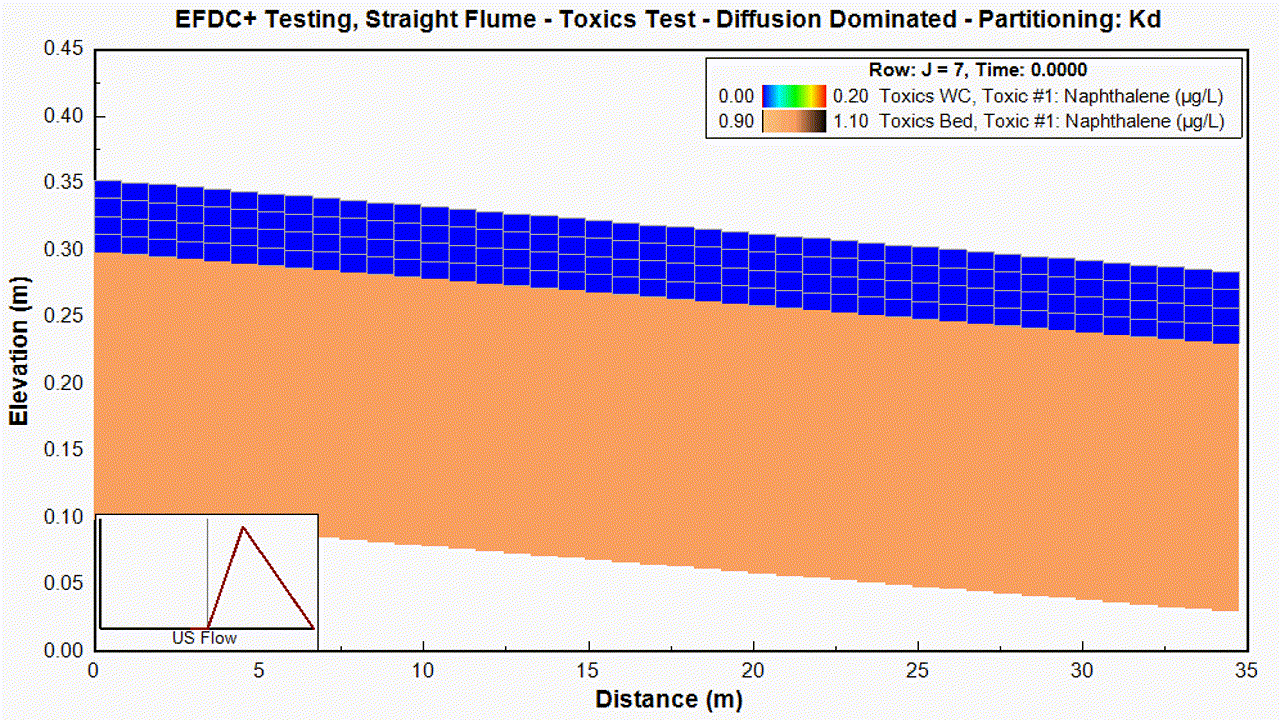Chemical Fate and Transport
In many parts of the world, pesticides, heavy metals, PAHs, PCBs, and other toxic substances in surface waters and sediments are a serious concern. EFDC+ supports sophisticated toxics modeling capabilities with the improved accuracy of 3D transport fields in a highly accurate numerical transport scheme. EFDC+ provides you the tools to determine the long-term and short-term concentration distributions of these substances in the waterbody and sediment bed.
Single Coupled Model
EFDC+ provides a fully coupled simulation for toxics modeling, which simplifies the model’s construction, calibration, and scenario analyses. With no need to generate and manage interface files, linkage file errors are reduced. Historically, coupled models have been criticized as too slow, but with EDFC+’s multi-threaded capability, this criticism no longer applies.
Contaminant Partitioning
With EFDC+, there’s no limit to the number of toxic substances you can simulate at one time. Each toxic substance can individually use 1-, 2- or 3-Phase Partitioning with optional organic carbon specification.
SEDZLJ Toxics Model
Developed by Sandia National Laboratory, SEDZLJ is an improvement on previous models because it directly incorporates site-specific erosion rate and shear stress data, while maintaining a physically consistent, unified treatment of bedload and suspended load. EFDC+ has extended the sediment transport capability of the SEDZLJ model with EFDC+’s robust toxics model.
Decay and Other Losses
In addition to bulk toxic decay, EFDC+ has the ability to simulate biodegradation in the water column and the sediment bed and volatilization at the water surface.
Non-Cohesive Bedload Transport
With EFDC+, you can now simulate toxics transport due to bedload, for both the original sediment transport module and the SEDZLJ module.

